2020 BMW X4 M Competition Is One of the Quickest SUVs We've Tested
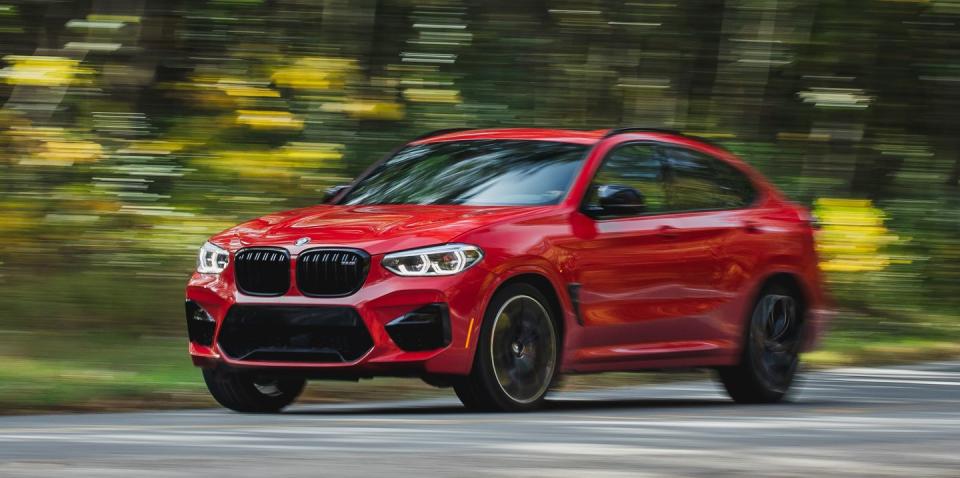
Much about the 2020 BMW X4 M Competition's casual disdain for Newton's various laws of motion impresses us, but it this crossover's acceleration figures that truly encapsulate its ludicrous capabilities. While its hunchbacked styling and squat stance are more hatchback than crossover, the range-topping X4 still is one of the quickest SUVs we have ever tested. Indeed, it's also one of the quickest M cars.
A 3.3-second zero-to-60-mph time is impressive in anything, let alone a 4539-pound crossover that clearly has been styled to impress. In posting that time, the X4 M Competition exactly matched the figures we recorded for both the Mercedes-AMG GLC63 S coupe and the Alfa Romeo Stelvio Quadrifoglio, yet the BMW's 8.0-second pull to 100 mph and its 11.6-second quarter-mile blast are quicker than both. Among SUVs, only the Lamborghini Urus has returned quicker straight-line test results, and the $81,395 X4 M Competition is less than half the price of the Lambo.
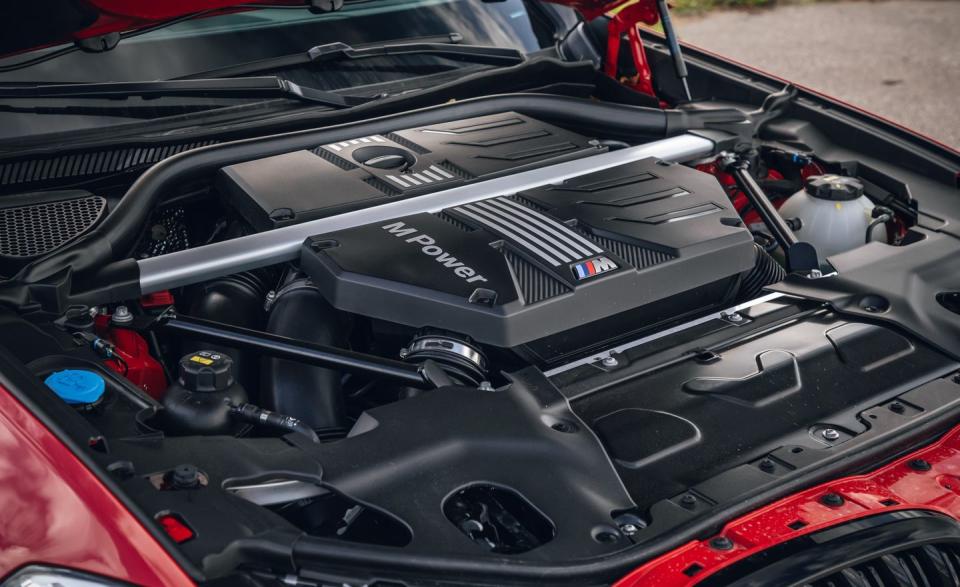
A Compact SUV Rocket
This Bimmer's motivation comes from a new twin-turbocharged 3.0-liter inline-six, codenamed S58, which also will find its way into the next-generation M3 and M4 models. It is the most powerful road-going six-cylinder engine that BMW has ever made and will happily snarl all the way to its 7200-rpm redline. While the S58 in the non-Competition X4 M employs 17.4 psi of boost to generate 473 horsepower, the Competition's compressors huff 18.9 psi into the engine for a heady output of 503 horses. The huge output reaches the road through an eight-speed automatic transmission and an all-wheel-drive system that incorporates the same electronically controlled torque-biasing rear differential that is fitted to the BMW M5 super sedan.
Despite the muscularity of its hardware, the abiding impression of the X4 M on the road is how usable it feels. The engine is happy to burble along at low speeds, with the automatic gearbox shifting intelligently to disguise the fact that there is some noticeable turbo lag below 3000 rpm, which you really only can detect when using the manual-shifting paddles on the back of the steering wheel. This BMW rides on steel coil springs rather than air springs, and although these are on the firm side of comfortable, standard adaptive dampers keep the ride relatively pliant over broken Michigan blacktop. Some drivers felt that the dampers' firmer Sport and Sport Plus settings were too unyielding for use away from a glass-smooth racetrack, yet others seemed to tolerate the X4 M's occasional buckboard impact harshness with little grumbling.
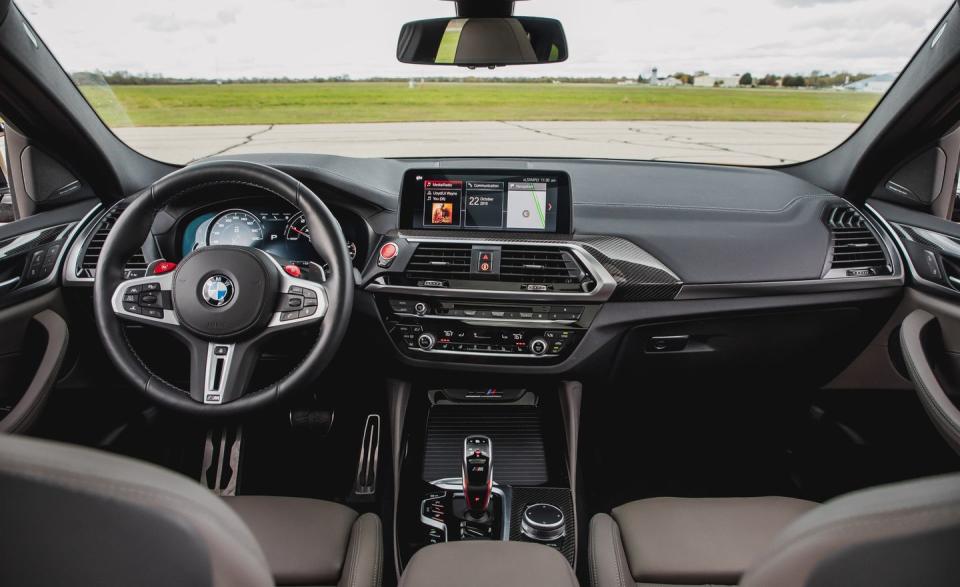
So Many Settings
This being a modern BMW M car, there are a multitude of dynamic chassis and powertrain settings that drivers can tweak to their heart's content in an almost-endless pursuit of the optimal setup. The X4 M also gets the same slightly confusing sideways-orientated gear selector as the M5 and M6, with which you slide right to go from Neutral to Drive or left and up to engage Reverse. The lever incorporates a small toggle to select three different gearshift programs of increasing severity. There also are separate buttons for adjusting the engine's aggressiveness, the suspension's stiffness, and the electrically assisted steering's weight through three modes, plus another button for the stability control's settings (on, Sport, and fully deactivated) and yet another for opening the flaps in the active exhaust system. What's more, the X4 M's xDrive all-wheel-drive system can be put into a more rear-biased AWD Sport mode but only with the stability control switched off. Small wonder there are two red M toggles on the steering wheel that can activate separate, driver-selected profiles for all of the available settings.
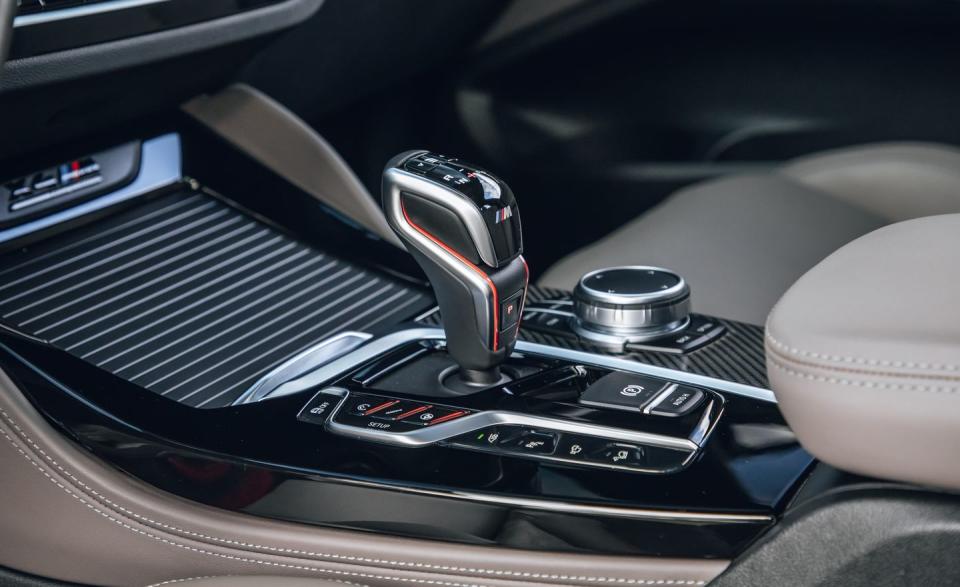
Our experience with the X4 M suggested that most drivers will quickly cut through the myriad of choices. We found little reason not to stick with the steering's softest Comfort setting, which allows some natural feedback to reach the rim without the artificial weight added by Sport and Sport Plus modes. Similarly, we can't see much use for the powertrain's Efficient setting in a 500-hp SUV, which seems to do little but kill the turbo-six's throttle response. The all-wheel-drive system works by sending as much torque as it can to the rear axle and diverting it forward only when slip is detected. The Sport and Sport Plus drive modes both raise the intervention threshold for slippage and make the car feel more edgy and exciting without becoming wayward. (Unlike the M5 and M6, there is no rear-drive-only mode.)
Grip levels are massive, the X4 M generating a sticky 0.97 g of lateral acceleration around the skidpad on its 21-inch Michelin Pilot Sport 4S tires; the GLC63 S managed 0.94 g, and the Alfa Romeo Stelvio Quad topped out at 0.95 g. On the road the X4 M shows impressive agility considering its considerable mass. Yet, while it turns keenly and accurately we noticed that the steering feels overly springy if you release the wheel with lock applied. Braking is handled by 15.6-inch rotors with four-piston calipers at the front and 14.6-inch rotors with single pistons at the rear, which are savagely effective, bringing the BMW to a stop from 70 mph in just 147 feet.
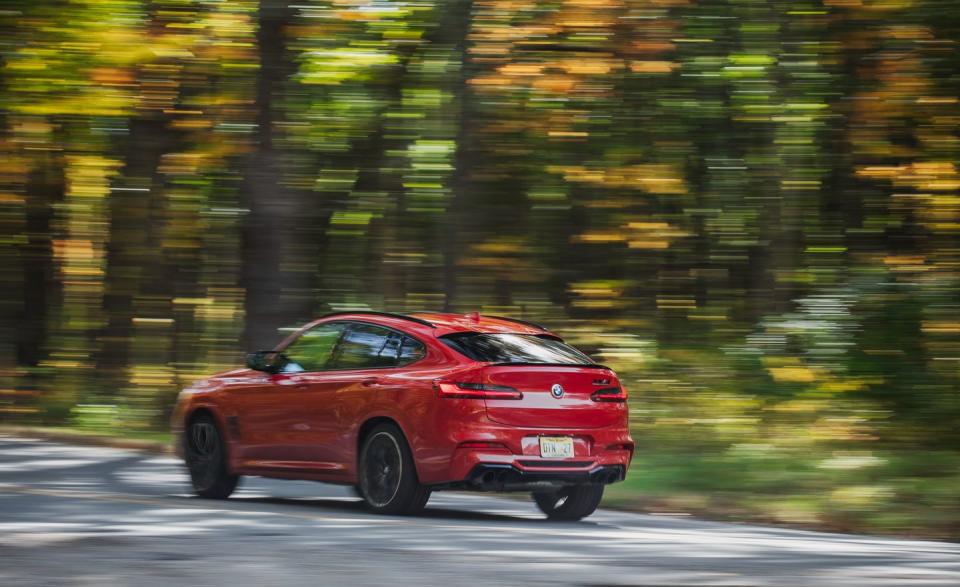
Capable but Compromised
Like the regular X4, the M is one of those crossovers where design is more important than raw practicality. It is a lifestyle statement. The rear seat is cramped for adult occupants, who will suffer a shortage of both knee and headroom and also will have to endure the upright angle of the seatback. The mechanically identical BMW X3 M is considerably more spacious inside, as well as handsomer (if less visually striking) on the outside.
In addition to the Competition model's increased power output, it also brings a standard sport exhaust system, larger anti-roll bars, and 21-inch wheels, plus the all-important Competition badge that sits beneath the X4 M emblem on the rear hatch. Whether all this justifies the $7000 premium that BMW charges for the Competition over the regular X4 M is a fair question, but for the car's target market, such considerations are unlikely to matter too much. If you want the quickest SUV under $100K, this is the current champion.
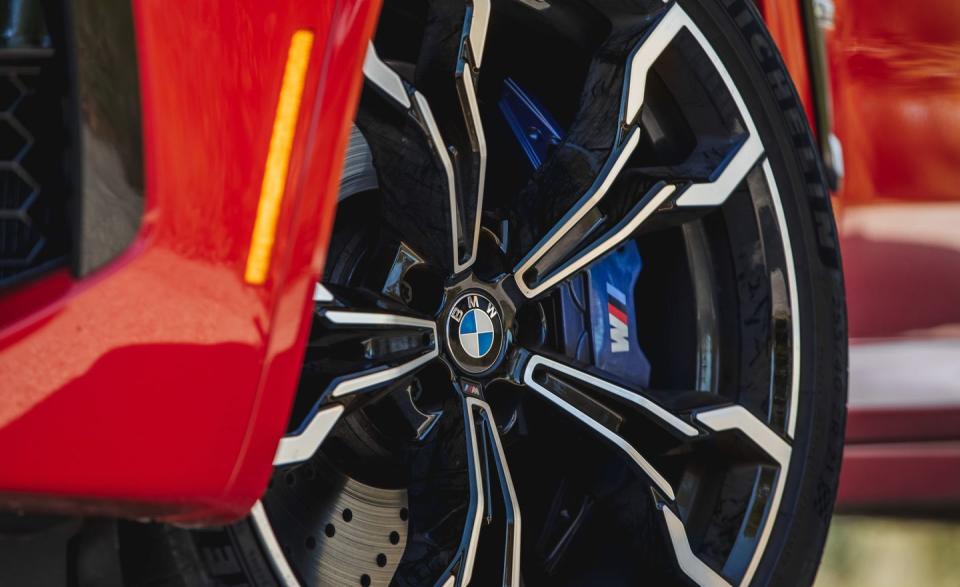
You Might Also Like

 Yahoo Autos
Yahoo Autos 